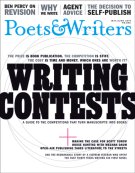Think of it as Book 2.0. Since last fall, an Alameda, California–based start-up has been blending digital text, images, video, and social networking to produce what it calls "vooks" (a portmanteau word formed from video and book), which can be accessed through any Web browser or downloaded to mobile devices via Apple's iTunes Store. In late February, the company, named Vook, received a significant vote of confidence when it secured $2.5 million in seed financing from, among others, Silicon Valley bigwig—and Twitter bankroller—Ron Conway and Huffington Post chair Kenneth Lerer.
Founded by Internet entrepreneur Bradley Inman, Vook debuted last year with only four titles, all from Simon & Schuster imprint Atria Books, but has wasted little time building its catalogue. The company's offerings, which are priced from ninety-nine cents to just under seven dollars, now comprise public domain classics such as Shakespeare's sonnets, self-help books, children's stories, and even "cookvooks." The company scored its first big-name fiction coup in March when it released a vook edition of an Anne Rice story originally published in Redbook in 1984. Aside from the text, the revamped "Master of Rampling Gate" features seven videos, including an interview with the author, spots on Gothicism and the Black Death, and a guided tour of New Orleans presented by the author's son. Thanks to a partnership with Rice's literary agency, Janklow & Nesbit Associates, and earlier deals with HarperStudio and Hachette Filipacchi Media, Vook expects to have produced about 250 similarly snazzed-up e-books by the end of the year.
Mixing text and other media is nothing new, of course. The concept has been explored for decades by the video game and software industries, with the first "enhanced" e-books appearing soon after the advent of CD-ROM technology in the late 1980s. And as the Internet has moved further from its textual roots, online magazines such as FLYP—which bills itself as "the first fully integrated multimedia publication"—have explicitly positioned themselves as new content models. Meanwhile, myebook, a two-year-old digital publishing platform, already lets users create and share interactive books—for free.
What's spurring interest from major players now is the proliferation—and growing sophistication—of e-readers and other mobile devices. With more consumers toting around gadgets capable of multimedia fireworks, plain-old text may begin to seem inadequate. "As discourse moves from printed pages to network screens, the dominant mode will be things that are multimodal and multilayered," Bob Stein, director of the Institute for the Future of the Book, told the Washington Post late last year. "The age of pure linear content is going to pass with the rise of digital network content."
That's all well and good for journalism, business, and education, but when the mixed-media approach is applied to literature, the results tend to prompt mixed reviews. "The vook is an experiment that's already failed," Stein told the San Francisco Chronicle. "Just slapping a bunch of banal video on a book doesn't make it interesting." What Stein and other critics recognize is that technological shifts in media delivery haven't yet been met by corresponding shifts in creativity. Combinations of media have been thinkable for years; the question remains how to integrate them so seamlessly as to free users from the need to battle a farrago of distracting stimuli and allow them instead to engage with a new creative—and coherent—form. Moving beyond the bounds of text (and for many, the jury is still out on whether that is a move worth making) will require not simply new ways of reading, but new approaches to writing altogether.
Adrian Versteegh is the editorial director of Anamesa. He lives in New York City.








